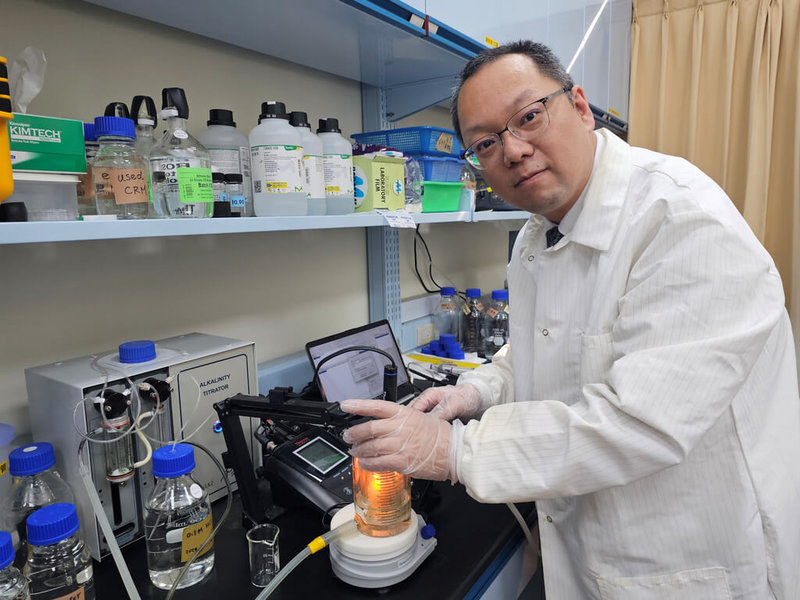
Assistant Professor Lei Hanjie of the Department of Marine Science at National Sun Yat-sen University analyzed observation data from the South China Sea and discovered for the first time that seawater alkalinity is on an upward trend. He also confirmed that ocean alkalinization contributes to long-term carbon removal. The results were published in the international journal "Geophysical Research Letters."
Sun Yat-sen University issued a press release on September 18th stating that Lei Hanjie, analyzing 26 years of South China Sea observation data, has discovered for the first time an increasing trend in seawater alkalinity, confirming the natural alkalinization of the ocean. This finding, he said, can increase the ocean's carbon dioxide absorption capacity by 28% and slow the rate of ocean acidification by 14%. This is the first demonstration that ocean alkalinization contributes to long-term carbon removal. The research report was published in Geophysical Research Letters.
Lei Hanjie stated that the ocean absorbs approximately 26% of human-caused carbon dioxide emissions through air-sea exchange, but this has led to acidification, threatening the marine ecosystem. In recent years, the United Nations Intergovernmental Panel on Climate Change (IPCC) has emphasized that achieving net-zero emissions requires more than carbon reduction alone; it must also incorporate carbon removal technologies. Increasing the alkalinity of seawater through artificial means is one innovative approach.
Lei Hanjie said that in the past, artificial alkalinity enhancement of the ocean was mostly theoretical or small-scale experiments, lacking long-term field observation data. He used long-term data from the Southeast Asian Time Series Study (SEATS) station established in the North and South China Seas in 1999 to systematically analyze indicators such as total alkalinity, dissolved inorganic carbon, pH value and calcium carbonate saturation.
"This analysis discovered for the first time a natural increase in alkalinity in the region, which can offset some of the acidification and chemical changes caused by carbon dioxide," Lei Hanjie explained. The 26 years of observational data in the South China Sea constitutes a "nature-provided ocean alkalinity experiment," examining the long-term state changes in the real ocean environment and providing scientific data to verify the effectiveness and safety of ocean alkalinity carbon removal technology.
Research shows that the total alkalinity of the South China Sea's surface water increases by 0.56 micromoles per kilogram (an increase of about 0.03 parts per thousand) each year, increasing the seawater's ability to absorb carbon dioxide by 28%, while slowing the rate of seawater acidification by 14% and the rate of decrease in calcium carbonate saturation by 22%.
Lei Hanjie emphasized that the observational results are highly consistent with theoretical models, demonstrating that ocean alkalinization is not only feasible for carbon removal but also offers the dual benefit of mitigating ocean acidification. This result not only helps understand environmental changes in the South China Sea but also serves as a reference for global carbon removal strategies. Future efforts will continue towards the development of artificial ocean alkalinization technology.
Source: CNA
Website: AI淨零/全球首次證實海水變鹼有助吸收二氧化碳 中山大學研究登國際期刊 | 生活 | 中央社 CNA
Disclaimer:
1.The articles compiled and published by this association on the Taiwan Net Zero Emissions Association's official website and in the Member Biweekly Report are for the purpose of introducing international environmental trends and for educational use only, not for profit.
2.Any legal responsibilities or losses resulting from the use or adaptation of articles translated by the association shall be borne solely by the user or adapter.
For more insights on net-zero emissions, feel free to subscribe to our biweekly newsletter:
https://www.tnzea.org.tw/eforms.php?lang=tw&tb=1


